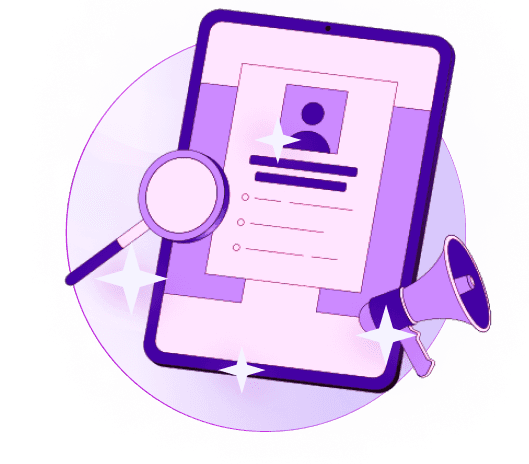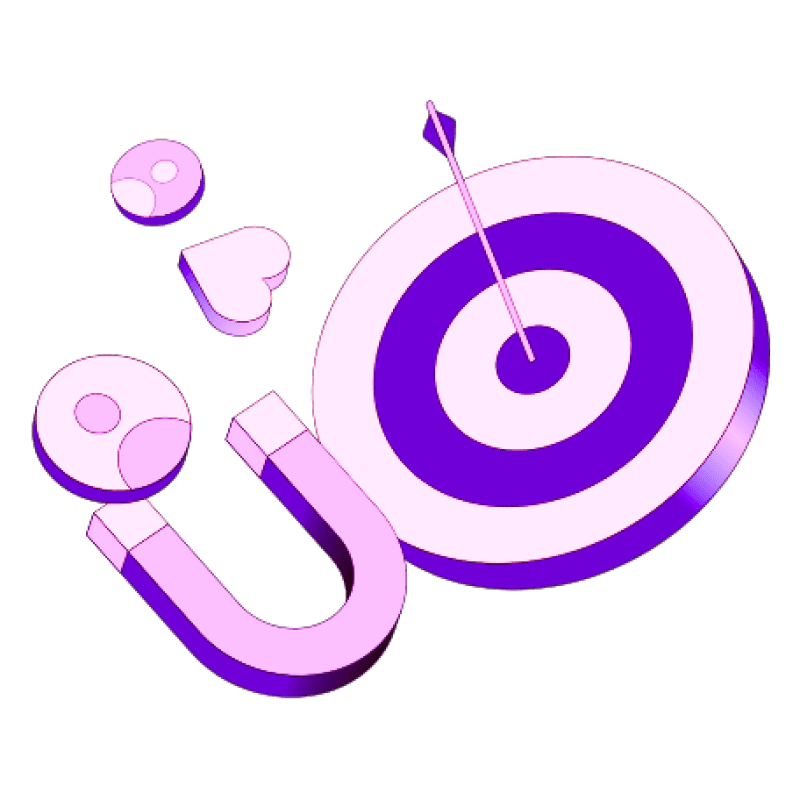Blogs
Articles

10 B2C AI Lead Generation Strategies to Boost Your Revenue in 2025
Lead generation ranks as the top growth priority for modern companies. B2C AI lead generation strategies have become crucial for businesses that want to stay competitive.
AI makes lead generation powerful by automating time-consuming tasks and finding prospects more likely to convert. AI lead-scoring models cut lead qualification time by 30%. Companies using these technologies report a 25% increase in their conversion rates.
Our research reveals the most effective ways to leverage this technology. These ten strategies combine predictive scoring and up-to-the-minute qualification to put your business at the vanguard of AI-powered lead generation in 2025.
10 B2C AI Lead Generation Strategies In 2025
AI-Powered Predictive Lead Scoring
Predictive lead scoring marks a major move away from old-school, static lead evaluation methods. This AI-powered approach uses machine learning algorithms to analyze past data and predict which leads will likely become customers. AI models adjust weights automatically as new patterns emerge, unlike traditional scoring systems that depend on subjective judgment and fixed rules.
The system works by looking at huge amounts of past customer interaction data. It analyzes hundreds of signals at once - from website activity and email engagement to content downloads and social media interactions. This creates a detailed picture of each prospect's behavior. The AI then spots patterns in successful conversions that humans might miss.
AI-powered predictive lead scoring's real value comes from knowing how to find hidden data points that basic methods overlook. The system spots signs of purchase authority and behavior patterns that show future actions and buying intent. The core question it answers is simple: which leads look like customers who've bought before?
Using predictive lead scoring brings significant advantages:
Improved Lead Qualification: AI spots the most promising leads so sales teams can focus on high-potential prospects
Increased Conversion Rates: Companies that use these systems see closing ratios jump from 11% to 40%
Improved Efficiency: AI doubles selling time by handling routine qualification tasks
Reduced Costs: Customer acquisition costs drop by 25% typically
B2C companies gain a competitive edge when they catch the right leads at the perfect moment in their buying experience. Sales teams spend less time on unlikely prospects, thanks to the system's accuracy.
AI-driven lead scoring uses predefined criteria and extensive data inputs instead of manual scoring that brings human bias. This creates a consistent, objective approach. Sales teams get fair lead distribution and avoid cherry-picking based on gut feelings.
Intent Data Activation for Smarter Targeting
Intent data is a goldmine of consumer signals that AI can turn into targeted lead generation opportunities. This valuable data captures behavioral indicators that show when prospects actively research products or services like yours. B2C businesses learn about customer interests and purchasing intentions by tracking website visits, search queries, ad clicks, and social media interactions.
Intent data's power lies in its ability to reveal not just who your prospects are, but exactly what they want. AI-powered intent analysis identifies consumers most likely to convert by interpreting their digital behavior patterns, unlike traditional demographic targeting. Your marketing efforts then focus on people genuinely interested in your offerings, which improves conversion rates by a lot.
AI brings remarkable precision to intent data through simultaneous analysis of multiple behavioral signals. AI examines patterns in different touchpoints to confirm genuine interest instead of relying on single actions that might falsely indicate purchase intent. Advanced algorithms can detect subtle changes in behavior that signal when a consumer moves closer to a purchasing decision.
AI-activated intent data offers these benefits:
Enhanced targeting precision: Focus marketing spend exclusively on high-intent prospects actively researching your product category
Hyper-personalized messaging: Tailor communications based on the specific challenges customers are researching
Improved ROI: Businesses using intent data reduce wasted ad spend and improve overall customer experiences
Real-time engagement: Connect with prospects at the exact moment they demonstrate purchase interest
Hyper-Personalized Email Campaigns
AI technology has transformed personalization in email marketing. Traditional personalization just has a recipient's name, yet hyper-personalization elevates this approach by analyzing detailed behavioral data to create tailored experiences.
Research shows that hyper-personalized emails generate 6x higher transaction rates than generic campaigns, with 29% higher open rates and 41% better click-through rates. These remarkable results happen because AI algorithms analyze big amounts of customer-specific data from multiple touchpoints, including:
Purchase history and browsing behavior
Email engagement patterns and content priorities
Website interactions and product interests
Geographic location and time-based engagement patterns
Note that effective AI-powered email personalization works nowhere near just addressing recipients by name. Modern systems utilize natural language generation to craft subject lines and body content specifically tailored to individual priorities. AI can also determine the best send times based on each subscriber's peak engagement periods.
AI Chatbots for Real-Time Engagement
Live engagement plays a crucial role in B2C lead generation success. AI chatbots stand out as one of the most effective tools that connect with potential customers at the perfect moment. Research indicates that 62% of consumers prefer chatbots over waiting for human customer service agents. This trend shows growing acceptance of these conversational interfaces.
AI chatbots have evolved from simple rule-based systems into sophisticated conversation partners that use natural language processing (NLP) and machine learning. These advanced systems can understand user intent, work with different languages, and create tailored interactions on the spot. Modern AI chatbots respond intelligently to off-topic questions or unexpected queries, unlike traditional chatbots with fixed scripts.
AI chatbots bring significant advantages to lead generation:
24/7 Availability: AI bots capture leads continuously and keep conversations active when interest peaks.
Instant Engagement: Quick responses prevent drop-offs and maintain prospect interest, which increases conversion potential.
Higher Quality Leads: More than 55% of businesses see better lead quality after adding conversational AI.
Consistent Qualification: Each lead follows identical logic, which ensures complete information gathering.
Cost Efficiency: Lower operational costs combine with better ROI through improved customer engagement.
AI chatbots excel beyond data collection by creating dynamic, tailored conversations that guide users toward conversion. Some industries report conversion rates as high as 70% with these tools.
Voice and Visual Search Optimization
The digital world has radically altered with voice and visual technologies. These changes create powerful new B2C AI lead generation opportunities. By 2023, digital voice assistants will reach 8 billion users worldwide—matching the global population. More than 36% of consumers now use visual search for their online shopping.
Voice search optimization adapts your content to spoken queries. Text searches differ from voice searches because voice queries tend to be longer and more conversational. To name just one example, rather than typing "best outdoor activities Santa Fe," people might ask, "Hey Siri, what are some fun things to do outside in Santa Fe?". This means content needs to match how people naturally speak.
These strategies work best for voice search optimization:
Focus on conversational keywords that match natural speech patterns and include question-based phrases starting with who, what, when, where, why, and how
Create detailed FAQ pages that answer common questions directly, as voice assistants often pull from these concise responses
Boost local SEO elements, since research shows local queries are among the most popular voice search categories
Prioritize mobile optimization as more than 90% of websites get more unique visitors from mobile devices than desktops
Visual search technology changes how consumers find products by letting them upload images instead of typing descriptions. Google reports their Lens visual search feature sees more than 10 billion uses monthly. This technology uses AI and machine learning to analyze images, recognize patterns, colors, and shapes, then matches them with similar products.
Zero-Click Lead Capture via Owned Media
B2C lead generation strategy has transformed as companies now capture leads without requiring website visits. Zero-click lead generation connects prospects with your brand directly from search engine results pages (SERPs) or other platforms. This removes traditional conversion barriers.
Featured snippets, knowledge panels, and other SERP features provide immediate answers to search queries. The approach gains importance since Google captures approximately two-thirds of all search queries through its properties. Your brand's first impression now happens differently.
Here's how to create effective zero-click lead capture strategies:
Optimize for featured snippets by structuring content with clear headings, using FAQ formats, and providing concise answers (40-60 words) to common questions
Utilize knowledge panels by ensuring accurate information about your brand is available online and implementing schema markup to help search engines understand your content
Employ "People Also Ask" boxes by researching common industry questions and creating content that directly addresses these queries
Improve Google My Business profiles with complete information that prospects can access without visiting your website
Zero-click strategies might seem counterintuitive at first, but they improve brand visibility and authority even without direct website visits. Users now find needed information without reaching your website. Success metrics have changed from page views to broader participation and brand recognition.
This strategy works alongside your other AI lead generation efforts. It helps maintain visibility in search results and platform content while promoting trust and familiarity before prospects visit your website.
AI-Powered Content Recommendations
Personalized content recommendations powered by AI are a significant B2C lead generation strategy that keeps potential customers involved throughout their trip. Netflix's content consumption is 80% driven by personalized recommendations. This shows how these systems can affect user involvement and conversion rates.
AI recommendation engines analyze big amounts of customer data. They look at browsing history, past purchases, product views, and demographic information to suggest relevant products that arrange with individual tastes. These sophisticated systems go beyond simple demographics. They identify patterns across similar users and let B2C companies showcase items that others with matching interests have purchased.
These intelligent systems work through three main approaches:
Content-based filtering: Recommends items based on specific characteristics of products a user has previously involved with, ideal for niche markets with limited customer bases
Collaborative filtering: Predicts priorities based on the behavior of similar users and suggests products not directly related to what the user has viewed
Hybrid filtering: Combines both approaches to create more accurate, highly tailored recommendations
AI recommendation engines add exceptional value to lead generation. Nearly half of US shoppers want tailored product recommendations. The data shows 56% return to merchants after customized shopping experiences. This personalization makes product discovery easier and prevents potential customers from endless scrolling.
Automated Lead Nurturing Sequences
Converting leads into customers depends on good follow-up. Automated lead nurturing sequences tackle this challenge through systematic processes that guide prospects through their buying trip with minimal manual work.
These automated sequences work as customized communications triggered by specific actions. The system starts relevant touchpoints when prospects download an ebook, join a webinar, or leave items in their cart. AI-powered nurturing analyzes customer behavior live and creates deeper customization at scale.
Good nurturing workflows bring many benefits. We shortened sales cycles by keeping in touch with leads regularly. Prospects receive helpful information instead of sales pitches, which boosts conversion rates. A basic "We miss you" email can revive up to 45% of dormant leads.
B2C companies find success with these workflows:
Welcome sequences (3-5 emails over 7-10 days) that introduce your brand after signup
Educational campaigns with targeted content based on interests
Cart recovery workflows to win back sales
Trigger sequences that respond to website activities
AI-Driven Social Media Lead Generation
Social media platforms have become powerful spaces for B2C lead generation. AI technologies now target potential customers with incredible precision. Meta processed over 1.1 billion lead ad submissions in 2023, showing a substantial 16.6% year-over-year growth. These numbers prove how AI-improved social media strategies work better than ever.
AI reshapes social media marketing by analyzing big data pools. It spots patterns and predicts how consumers behave, which creates targeted campaigns that improve engagement rates and lead quality. Meta's instant forms work better than regular website forms, costing 20% less per qualified lead.
Adding AI tools to social media strategies gives businesses several advantages:
Automated Content Scheduling – AI spots when audiences are most active and posts content at perfect times without human input
Predictive Analytics – Machine learning algorithms look at past data to spot upcoming trends, helping marketers adapt quickly
Dynamic Personalized Ads – AI builds flexible ads that change based on how users interact and what they like
Social Listening – Smart tools track brand mentions everywhere to spot trends, feelings, and possible leads
Modern AI systems do more than simple automation. They smooth out the entire lead capture process. New leads automatically go into CRM or email marketing software, connecting social platforms with sales systems seamlessly. This quick handoff lets teams follow up right away, which makes conversions more likely.
The right tools make a difference. Platforms like HubSpot Marketing Hub, Pardot, SharpSpring, Marketo Engage, and Infusionsoft offer detailed tools built for social media lead capture and management. These platforms come with customizable forms and simplified processes that turn casual social media chats into real sales opportunities.
AI-improved social media lead generation gives businesses a lasting edge. It handles routine work automatically while providing deeper customer insights than manual methods ever could.
Real-Time Lead Qualification and Routing
Sales success largely depends on how quickly you qualify and distribute prospects. AI-powered sales teams report 98% better lead prioritization, which has revolutionized how B2C companies handle new prospects.
Immediate lead qualification uses machine learning algorithms to assess potential customers based on their conversion probability. These systems analyze big datasets that include behavioral signals, participation metrics, and historical patterns to create accurate lead scores. The scoring system ranges from 0 to 100, with higher scores showing better-qualified leads.
This approach becomes valuable especially when you have its dynamic nature. Traditional methods use static rules, but AI qualification learns continuously from outcomes (conversion or no conversion). The predictions become more accurate over time. Sales teams can now focus only on leads that show the highest purchase intent.
Automated routing follows qualification. This process directs leads instantly to suitable sales representatives based on set criteria. Modern systems can route leads by:
Geographic territory
Industry expertise
Lead value
Representative capacity
Existing account ownership
The system eliminates manual sorting and creates clear accountability when leads enter your system. Studies show that reaching out to leads within minutes instead of hours can boost qualification rates by 7x.
The setup needs integration with your existing CRM platform. Top solutions utilize artificial intelligence to display key metrics in dashboards customized to your business needs, such as average lead score by source and lead score distribution. Some platforms update scores automatically every 10 days to track emerging trends.
AI-powered scoring systems help marketing and sales teams agree on which leads deserve attention. This shared understanding improves team coordination. Companies can now convert top-quality leads into successful deals with better funnel progression.
Conclusion
AI lead generation is a game-changer for B2C companies ready to adopt these technologies. This piece explores ten powerful strategies that revolutionize how you find and convert qualified leads. Predictive scoring helps you target prospects who are likely to convert. Intent data activation lets you reach customers who actively research your products. Tailored email campaigns deliver better engagement rates than generic approaches.
AI chatbots connect with potential customers 24/7 and capture leads when interest peaks. Voice and visual search optimization creates new ways to find customers as their behavior evolves. Zero-click lead capture maximizes visibility even without direct website visits. AI-powered content recommendations keep prospects engaged throughout their experience.
Automated nurturing sequences follow up consistently without manual work. A social-first lead generation approach taps into platforms where your audience spends much of their time. Live qualification routes promising leads to the right representatives right away.
Companies using these AI strategies see remarkable improvements—20% increases in sales productivity, 25% higher conversion rates, and up to 70% reduction in lead research time. Your business can achieve these results by applying these approaches to your specific needs.
Companies ready to implement these advanced strategies can find complete solutions through Persana.ai with tools designed to execute these lead generation techniques.
AI-powered lead generation changes how B2C companies connect with potential customers at its core. These technologies actively identify and connect with high-intent consumers before competitors know they exist. Early adoption of these strategies gives you the edge as we move toward 2025, where AI will without doubt become the standard in successful B2C lead generation programs.

Create Your Free Persana Account Today
Join 5000+ GTM leaders who are using Persana for their outbound needs.
How Persana increases your sales results
One of the most effective ways to ensure sales cycle consistency is by using AI-driven automation. A solution like Persana, and its AI SDR - Nia, helps you streamline significant parts of your sales process, including prospecting, outreach personalization, and follow-up.



